Are you struggling to choose the right transformer size for your project? You're not alone. Many engineers and project managers face this challenge, often leading to costly mistakes and inefficient power distribution.
Selecting the correct pad mounted transformer size is crucial for efficient power distribution. It involves analyzing current and future power needs, considering load profiles, and understanding environmental factors. The right size ensures optimal performance, energy efficiency, and cost-effectiveness in various distribution scenarios.
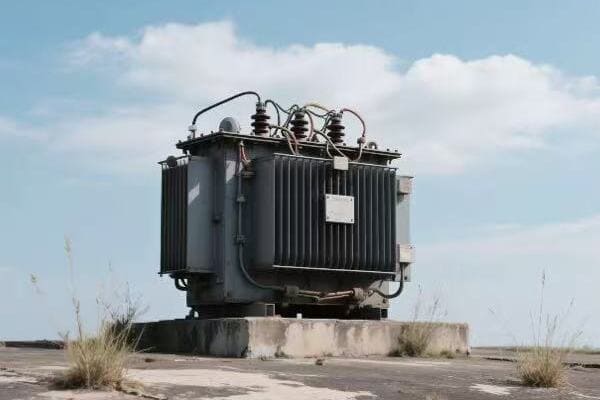
In this article, I'll guide you through the essential factors to consider when selecting pad mounted transformer sizes. Whether you're working on a residential development or an industrial complex, you'll find valuable insights to make informed decisions and avoid common pitfalls.
Transformer Sizing 101: Why One Size Doesn't Fit All in Power Distribution?
Have you ever tried to wear a one-size-fits-all hat? It rarely fits perfectly, right? The same principle applies to transformer sizing in power distribution. Choosing the wrong size can lead to inefficiency, increased costs, and even system failures.
Transformer sizing is critical because electrical needs vary widely across different applications. Factors such as load requirements, voltage regulation, future growth, and environmental conditions all play crucial roles. Proper sizing ensures optimal performance, energy efficiency, and longevity of the distribution system.
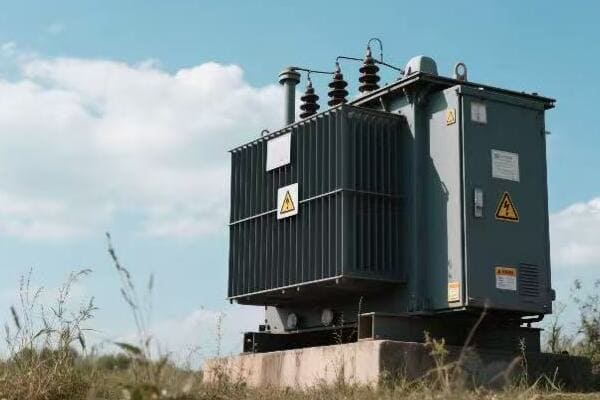
Let's dive deeper into why transformer sizing is so important and how to approach it:
Load Requirements: The Foundation of Sizing
Understanding your load requirements is the first step in choosing the right transformer size.
Key Considerations:
- Peak load demand
- Average load profile
- Types of loads (resistive, inductive, capacitive)
Voltage Regulation: Keeping Power Steady
Proper sizing ensures stable voltage output across varying load conditions.
Voltage Factors:
- Primary voltage fluctuations
- Secondary voltage stability requirements
- Voltage drop considerations
Future Growth: Planning Ahead
A well-sized transformer should accommodate future expansion.
Growth Factors:
- Projected load increases
- Potential new equipment or facilities
- Changes in power consumption patterns
Environmental Conditions: Adapting to Surroundings
The environment where the transformer will operate significantly impacts sizing decisions.
Environmental Considerations:
- Ambient temperature ranges
- Altitude
- Humidity and pollution levels
| Sizing Factor | Impact on Selection | Common Mistake |
|---|---|---|
| Load Requirements | Determines basic capacity | Underestimating peak loads |
| Voltage Regulation | Affects transformer rating | Ignoring voltage fluctuations |
| Future Growth | Influences capacity margin | Not planning for expansion |
| Environmental Conditions | Affects cooling and insulation | Overlooking local climate |
I remember a project early in my career that really drove home the importance of proper transformer sizing. We were tasked with providing power distribution for a new commercial complex. The client, eager to cut costs, insisted on using a smaller transformer than what we had initially recommended.
Against my better judgment, we proceeded with their choice. Everything seemed fine at first, but problems began to surface within months of operation. During peak hours, especially in summer when air conditioning use was high, the transformer would overheat, leading to frequent shutdowns and voltage instability.
This situation taught me a valuable lesson about the real-world implications of transformer sizing. It's not just about meeting current needs; it's about understanding the dynamic nature of power consumption and planning for the future.
Since then, I've developed a comprehensive approach to transformer sizing. I start by conducting a thorough load analysis. This involves not just looking at the total power requirements but understanding the nature of the loads. Are they mostly resistive, like heating elements, or inductive, like motors? Each type of load affects the transformer differently.
Voltage regulation is another critical factor I always consider. In one industrial project, we faced significant voltage fluctuations due to large motor starts. By properly sizing the transformer and incorporating voltage regulation equipment, we were able to maintain stable power supply, crucial for sensitive manufacturing processes.
Future growth is something I never overlook now. I always discuss long-term plans with clients. In a recent project for a tech company, we sized the transformer to accommodate a 30% increase in load over five years. This foresight paid off when the company expanded faster than expected, and their power needs were easily met without additional infrastructure changes.
Environmental conditions play a bigger role than many realize. I once worked on a project in a high-altitude location. The thinner air meant less effective cooling, requiring a larger transformer than would typically be needed for the same load at sea level. Overlooking this could have led to premature transformer failure.
One technique I've found particularly useful is scenario planning. I create multiple load profiles – best case, worst case, and most likely case. This helps in choosing a transformer size that can handle various potential futures without being unnecessarily oversized.
It's also important to consider the type of loads being served. In a recent data center project, we had to account for the high harmonic content typical of computer loads. This required a transformer with a higher K-factor rating to handle the additional heating caused by harmonics.
Efficiency is another factor that's become increasingly important. I always discuss with clients the trade-offs between initial costs and long-term energy savings. Sometimes, a slightly larger, more efficient transformer can lead to significant energy cost savings over its lifetime.
Remember, transformer sizing is not just a technical exercise; it's about understanding the client's needs, both present and future, and finding the best balance between performance, cost, and reliability. By taking a holistic approach to sizing, we can ensure that the power distribution system not only meets current needs but is also prepared for future challenges.
From Homes to Factories: Matching Transformer Sizes to Your Electrical Needs?
Ever wondered why the transformer in your neighborhood looks different from the one outside a factory? It's not just about size – it's about matching the right transformer to specific electrical needs. Get it wrong, and you could be facing anything from minor inefficiencies to major power failures.
Matching transformer sizes to electrical needs involves understanding the unique power requirements of different settings. Residential areas need smaller, more numerous transformers, while industrial zones require larger, high-capacity units. Proper matching ensures efficient power distribution, reduces energy losses, and maintains voltage stability across various applications.
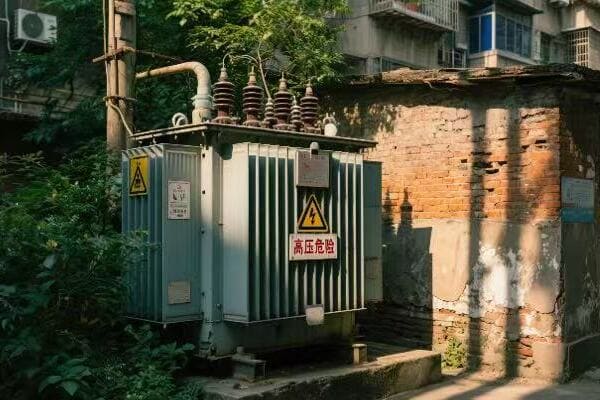
Let's explore how transformer sizes vary across different settings and why it matters:
Residential Areas: Powering Our Homes
Residential transformers have unique requirements different from their industrial counterparts.
Residential Transformer Characteristics:
- Typically smaller in size (25-100 kVA)
- Designed for consistent, lower-level loads
- Often serve multiple households
Commercial Zones: Keeping Businesses Running
Commercial areas have more varied and often higher power needs than residential zones.
Commercial Transformer Needs:
- Medium-sized units (100-500 kVA)
- Ability to handle load fluctuations
- Often require better voltage regulation
Industrial Settings: Powering Heavy Machinery
Industrial transformers need to handle high loads and often harsh conditions.
Industrial Transformer Requirements:
- Large capacity (500 kVA and above)
- Designed for continuous heavy loads
- Often custom-designed for specific applications
Special Applications: Unique Power Needs
Some settings require transformers with very specific characteristics.
Special Application Examples:
- Data centers (high efficiency, harmonic mitigation)
- Renewable energy installations (bidirectional power flow)
- Healthcare facilities (high reliability, low noise)
| Setting | Typical Size Range | Key Considerations |
|---|---|---|
| Residential | 25-100 kVA | Load diversity, future growth |
| Commercial | 100-500 kVA | Peak load handling, energy efficiency |
| Industrial | 500+ kVA | Continuous load capacity, custom features |
| Special | Varies | Application-specific requirements |
I once worked on a project that really highlighted the importance of matching transformer sizes to specific electrical needs. We were tasked with upgrading the power distribution system for a mixed-use development that included residential apartments, retail spaces, and a small manufacturing unit.
Initially, the developer wanted to use a single large transformer for the entire complex, thinking it would be more cost-effective. However, after a detailed analysis, we realized this approach would lead to significant inefficiencies and potential reliability issues.
For the residential area, we opted for several smaller transformers (50 kVA each) strategically placed throughout the complex. This approach allowed for better load management and reduced the impact of any single transformer failure. We also factored in the potential for future electric vehicle charging stations, sizing these transformers to accommodate this growing need.
The retail spaces presented a different challenge. Their power consumption varied greatly throughout the day and week. We chose 200 kVA transformers with good overload capacity to handle peak shopping hours, especially during holidays. These transformers also had better voltage regulation capabilities to protect sensitive electronic equipment in the stores.
The manufacturing unit was the most demanding in terms of power needs. We installed a 750 kVA transformer specifically designed for industrial use. It could handle the high starting currents of large motors and had additional cooling capacity to manage the continuous heavy loads.
One interesting aspect of this project was dealing with harmonics, especially in the retail area where there were many non-linear loads like LED lighting and computer systems. We incorporated K-rated transformers in these areas to handle the additional heating caused by harmonic currents.
The results of this tailored approach were impressive. Energy efficiency improved across the board, with each area receiving power optimized for its needs. Maintenance became easier and more cost-effective, as each transformer was sized and specified for its particular application.
This project taught me the value of a nuanced approach to transformer sizing. It's not just about calculating total load; it's about understanding the unique characteristics of each setting and how they impact power needs.
In residential areas, I now always consider load diversity. Not every home will use maximum power simultaneously, so transformers can often be sized smaller than the sum of individual maximum loads. This approach saves costs and improves efficiency.
For commercial zones, I've learned to pay special attention to future expansion. In one shopping center project, we installed transformers with 20% extra capacity. This foresight paid off when several stores added energy-intensive equipment a few years later.
Industrial settings have taught me the importance of reliability and redundancy. In a recent factory project, we installed two transformers, each capable of handling 60% of the total load. This N+1 redundancy ensured production could continue even if one transformer failed.
Special applications often require thinking outside the box. For a data center project, we used highly efficient, low-loss transformers with advanced cooling systems. The extra upfront cost was justified by significant long-term energy savings and improved reliability.
Remember, matching transformer sizes to electrical needs is both an art and a science. It requires technical knowledge, experience, and a good understanding of the client's current and future needs. By taking the time to properly match transformers to their applications, we can create more efficient, reliable, and cost-effective power distribution systems.
Future-Proofing Your Power: Choosing a Transformer That Grows with You?
Are you worried about outgrowing your power system? It's a common concern. Many businesses find themselves needing costly upgrades just a few years after installation. But what if your transformer could grow with your needs?
Future-proofing power systems involves selecting transformers that can accommodate growth. This means choosing units with scalable capacity, adaptable features, and the ability to integrate with emerging technologies. A well-future-proofed transformer ensures long-term reliability, reduces the need for frequent upgrades, and provides flexibility for changing power needs.
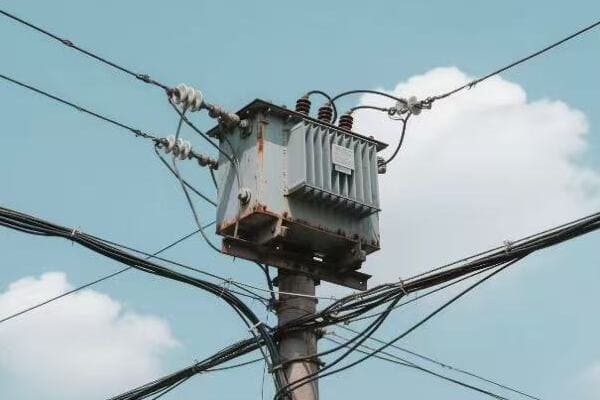
Let's explore strategies for selecting a transformer that can grow with your business:
Scalable Capacity: Room to Grow
Choosing a transformer with scalable capacity is key to future-proofing.
Scalability Features:
- Modular design for easy expansion
- Oversize-capable cooling systems
- Tap changers for voltage adjustment
Smart Technology Integration: Preparing for the Digital Age
Modern transformers should be ready for smart grid technologies.
Smart Features:
- Digital monitoring capabilities
- Remote control and diagnostics
- Compatibility with energy management systems
Adaptability to New Energy Sources: Embracing Renewables
Future-proof transformers should be ready for renewable energy integration.
Renewable-Ready Features:
- Bidirectional power flow capability
- Harmonic mitigation for solar and wind inputs
- Energy storage system compatibility
Efficiency Upgrades: Staying Ahead of Standards
Choosing a transformer that exceeds current efficiency standards can pay off in the long run.
Efficiency Considerations:
- High-efficiency core materials
- Low-loss winding designs
- Advanced cooling technologies
| Future-Proofing Aspect | Benefits | Implementation Challenges |
|---|---|---|
| Scalable Capacity | Accommodates growth without replacement | Higher initial cost |
| Smart Technology | Enables advanced monitoring and control | Requires IT infrastructure |
| Renewable Adaptability | Supports green energy initiatives | May need additional equipment |
| Efficiency Upgrades | Reduces long-term operational costs | Technology may evolve rapidly |
I recall a project that really drove home the importance of future-proofing power systems. We were working with a tech startup that was rapidly expanding. They needed a power solution that could keep up with their growth without requiring frequent, disruptive upgrades.
Initially, the company wanted to install a standard transformer sized for their current needs. However, after discussing their growth projections, we realized this approach would lead to multiple replacements within a few years.
Instead, we proposed a modular transformer system. We started with a base unit that met their immediate needs but was designed to easily accommodate additional modules. The cooling system was oversized from the start, capable of handling the heat from future expansions.
One key feature we included was an advanced tap changer. This allowed for voltage adjustments as their load characteristics changed over time, ensuring optimal performance even as their power needs evolved.
We also integrated smart monitoring capabilities. This system provided real-time data on transformer performance, load patterns, and efficiency. It allowed the company to make informed decisions about when to add capacity and how to optimize their power usage.
Anticipating the company's interest in sustainability, we ensured the transformer was ready for renewable energy integration. It had bidirectional power flow capabilities, allowing for easy connection of solar panels in the future. We also included harmonic mitigation features to handle the power quality issues often associated with renewable sources.
The results were impressive. Over the next five years, the company expanded rapidly, doubling their power needs. Thanks to our future-proofed design, they were able to scale up their power capacity without replacing the entire system. The modular approach allowed for quick, minimally disruptive additions to their transformer capacity.
The smart monitoring system proved invaluable. It helped the company identify peak usage times and optimize their operations to reduce energy costs. When they decided to install rooftop solar panels, the transformer was ready, seamlessly integrating the new power source.
This experience taught me the value of looking beyond immediate needs when designing power systems. Now, whenever I work on a new project, I always discuss long-term plans with clients. Even if they're not sure about future expansions, I try to build in as much flexibility as possible.
One technique I've found particularly useful is scenario planning. We create multiple growth scenarios – conservative, moderate, and aggressive – and design a system that can adapt to any of these futures.
I've also learned the importance of staying up-to-date with emerging technologies. In a recent project, we included provisions for connecting large-scale battery storage, anticipating the growing trend towards energy storage solutions.
Efficiency is another area where future-proofing pays off. I always recommend transformers that exceed current efficiency standards. While they may cost more upfront, the long-term energy savings often justify the investment, especially as energy prices rise.
Remember, future-proofing your power system is about more than just capacity. It's about creating a flexible, efficient system that can adapt to changing technologies and energy landscapes. By thinking ahead and choosing transformers with scalability, smart features, and adaptability, you can ensure your power system remains an asset, not a limitation, as your business grows and evolves.
The Goldilocks Principle: Finding the 'Just Right' Transformer Size for Your Project?
Have you ever felt overwhelmed trying to choose the perfect transformer size for your project? Too small, and you risk overloading; too large, and you're wasting money and efficiency. It's like Goldilocks searching for the 'just right' option.
Finding the 'just right' transformer size involves balancing current needs, future growth, and efficiency. It requires careful load analysis, consideration of peak demands, and understanding of operational patterns. The ideal size ensures optimal performance, energy efficiency, and cost-effectiveness, while providing enough capacity for reasonable future expansion.

Let's explore how to apply the Goldilocks principle to transformer sizing:
Load Analysis: Understanding Your Power Needs
Accurate load analysis is the foundation of proper transformer sizing.
Key Analysis Points:
- Average load requirements
- Peak load demands
- Load factor and diversity
Future Growth: Planning for Expansion
Balancing current needs with future growth is crucial for long-term efficiency.
Growth Considerations:
- Projected load increases
- Potential new equipment or facilities
- Industry trends affecting power consumption
Efficiency Curves: Optimizing Performance
Understanding### Efficiency Curves: Optimizing Performance
Understanding transformer efficiency curves is key to finding the 'just right' size.
Efficiency Factors:
- No-load losses
- Load losses at various capacities
- Peak efficiency point
Environmental and Space Constraints: Fitting In
The perfect size must also fit within physical and environmental limitations.
Constraint Considerations:
- Available installation space
- Ambient temperature and cooling needs
- Noise and EMF restrictions
| Sizing Factor | Undersized Risk | Oversized Risk |
|---|---|---|
| Load Capacity | Overheating, reduced lifespan | Wasted capacity, higher initial cost |
| Efficiency | Poor performance at peak loads | Inefficient operation at normal loads |
| Future Growth | Frequent upgrades needed | Unnecessary capital investment |
| Physical Fit | Inadequate for space | Excessive space requirements |
I remember a particularly challenging project where finding the 'just right' transformer size was crucial. We were working on a new office complex that included standard office spaces, a data center, and plans for future electric vehicle charging stations. The diversity of loads and the uncertainty of future needs made this a perfect example of the Goldilocks principle in action.
Our first step was a comprehensive load analysis. We gathered data on the expected power consumption of each area, paying special attention to the data center's requirements. The tricky part was accounting for the potential EV charging stations, which weren't part of the initial build but were planned for the near future.
We used sophisticated modeling software to create a detailed load profile. This showed us not just the total power requirements, but how they varied throughout the day and week. The data center, for instance, had a relatively constant load, while the office spaces showed clear peaks during working hours.
For future growth, we consulted with the property developers about their long-term plans. They anticipated a 20% increase in office occupancy over five years and a possible expansion of the data center. We also factored in the growing trend of EV adoption, estimating the potential load from charging stations.
The efficiency curve analysis was particularly enlightening. We compared several transformer sizes, looking at their efficiency across different load levels. Our goal was to find a size that would operate near its peak efficiency point under normal conditions but could handle peak loads without overheating.
Environmental constraints played a significant role in our decision. The transformer was to be installed in a basement with limited space and ventilation. This ruled out some larger options and pushed us towards more compact, efficient designs.
After careful consideration, we settled on a 2000 kVA transformer. This size provided enough capacity for current needs plus the anticipated growth, including the EV charging stations. It also operated at high efficiency under the expected average load conditions.
To address the space constraints, we chose a low-loss amorphous core design, which allowed for a more compact transformer without sacrificing efficiency. We also implemented an advanced cooling system to ensure optimal performance in the limited ventilation of the basement.
The results were impressive. In the first year of operation, the transformer handled all loads efficiently, including some unexpected peaks from the data center. When the first set of EV charging stations was installed 18 months later, the system accommodated them without any issues.
This project taught me the importance of a holistic approach to transformer sizing. It's not just about meeting the maximum load; it's about finding a size that balances current needs, future growth, efficiency, and physical constraints.
One technique I now always use is scenario planning. We create multiple load scenarios – best case, worst case, and most likely – and choose a transformer size that performs well across all of them. This approach helps in finding that 'just right' size that can adapt to various future possibilities.
I've also learned the value of modular approaches in certain situations. For a recent project with highly uncertain future needs, we installed two smaller transformers instead of one large one. This allowed for more flexibility in handling load growth and provided built-in redundancy.
Energy efficiency has become an increasingly important factor in my sizing decisions. I always calculate the total cost of ownership, including projected energy costs over the transformer's lifetime. Often, a slightly larger, more efficient transformer can lead to significant long-term savings.
Remember, finding the 'just right' transformer size is both an art and a science. It requires technical knowledge, experience, and a good understanding of the client's current and future needs. By carefully balancing all these factors, we can ensure that the transformer is neither too big nor too small, but just right for the job at hand.
Big or Small? Understanding the Impact of Transformer Size on Energy Efficiency?
Have you ever wondered if bigger is always better when it comes to transformers? Or maybe you're concerned that your small transformer isn't up to the task? The truth is, size matters in transformer efficiency, but not always in the way you might think.
Transformer size significantly impacts energy efficiency, but bigger isn't always better. Optimal efficiency depends on matching the transformer size to the actual load profile. Oversized transformers can lead to higher no-load losses, while undersized units risk overheating and increased load losses. The key is finding the right balance for your specific needs.
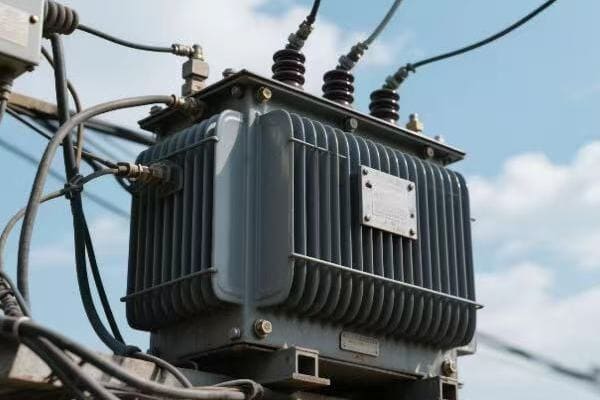
Let's dive into how transformer size affects energy efficiency:
No-Load Losses: The Cost of Being Too Big
Larger transformers often have higher no-load losses, impacting efficiency even when idle.
No-Load Loss Factors:
- Core size and material
- Magnetic flux density
- Operating voltage
Load Losses: The Penalty of Being Too Small
Undersized transformers can lead to increased load losses, especially during peak demand.
Load Loss Considerations:
- Winding resistance
- Eddy current losses
- Stray losses
Efficiency Curves: Finding the Sweet Spot
Understanding efficiency curves is crucial for selecting the optimal transformer size.
Efficiency Curve Factors:
- Peak efficiency point
- Load factor
- Daily load profile
Long-Term Cost Implications: Balancing Initial and Operating Costs
The right size impacts not just efficiency but also long-term operational costs.
Cost Considerations:
- Initial purchase price
- Energy costs over lifespan
- Maintenance and replacement costs
| Transformer Size | Efficiency Impact | Cost Implications |
|---|---|---|
| Oversized | Higher no-load losses | Higher initial cost, potential energy waste |
| Undersized | Higher load losses, risk of overheating | Lower initial cost, higher operating costs |
| Optimal Size | Balanced losses, best overall efficiency | Optimal long-term cost, best ROI |
I once worked on a project that perfectly illustrated the impact of transformer size on energy efficiency. We were called in to analyze the power system of a medium-sized manufacturing plant that was experiencing high energy costs despite recent upgrades to their equipment.
Upon inspection, we found that during a recent expansion, the plant had installed a transformer that was significantly oversized for their needs. The plant manager had followed the "bigger is better" philosophy, thinking it would provide room for future growth and better performance.
However, our analysis revealed that this oversized transformer was actually a major source of inefficiency. The no-load losses were much higher than necessary, meaning the transformer was wasting energy even when the plant wasn't operating at full capacity, which was most of the time.
We conducted a detailed load study, analyzing the plant's power consumption patterns over several weeks. This revealed that the actual load rarely exceeded 60% of the transformer's capacity, and the average load was even lower.
Using this data, we modeled the efficiency of different transformer sizes. We found that a transformer about 30% smaller than the installed unit would operate much closer to its peak efficiency point under normal conditions, significantly reducing overall losses.
The plant manager was initially skeptical about "downsizing" their transformer. To convince him, we prepared a comprehensive cost-benefit analysis. This showed that while the no-load losses of the larger transformer seemed small on an hourly basis, they added up to substantial energy waste and cost over a year.
We also demonstrated how a properly sized transformer would not only be more efficient but would also operate at a lower temperature, potentially extending its lifespan and reducing maintenance needs.
After presenting our findings, the plant agreed to replace the oversized transformer with a more appropriately sized unit. The results were impressive. In the first year after the change, the plant saw a 15% reduction in their electricity costs related to transformer losses. The new transformer ran cooler and more efficiently, even during peak production times.
This experience taught me the importance of challenging the "bigger is better" mindset when it comes to transformer sizing. Since then, I always emphasize to clients that the goal is not to have the largest transformer possible, but the one that best matches their actual usage patterns.
One technique I now use in every project is to create detailed load duration curves. These show not just the peak load, but how often different load levels occur. This helps in selecting a transformer size that operates efficiently across the most common load ranges.
I've also become a strong advocate for the use of advanced monitoring systems in transformer installations. These systems provide real-time data on transformer performance and efficiency, allowing for ongoing optimization and early detection of any issues.
In some cases, where load patterns are highly variable or future growth is uncertain, I've recommended using multiple smaller transformers instead of one large unit. This approach allows for better load matching and provides built-in redundancy.
It's important to remember that transformer efficiency isn't just about reducing energy bills; it's also about sustainability and reducing overall environmental impact. By choosing the right size transformer, we're not just saving money; we're also contributing to more sustainable energy use.
The key takeaway is that when it comes to transformer size and efficiency, the goal is to find the right fit, not necessarily the biggest option. By carefully analyzing load patterns, considering future needs, and understanding efficiency curves, we can select transformer sizes that provide optimal performance, energy efficiency, and cost-effectiveness over their entire lifespan.
Conclusion
Selecting the right pad mounted transformer size is crucial for efficient power distribution. It requires careful consideration of current needs, future growth, efficiency curves, and environmental factors. The ideal size balances performance, cost-effectiveness, and adaptability to ensure optimal long-term operation.


